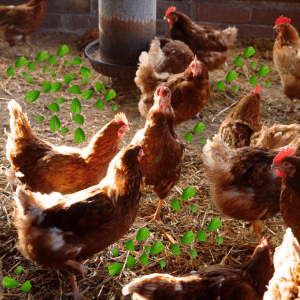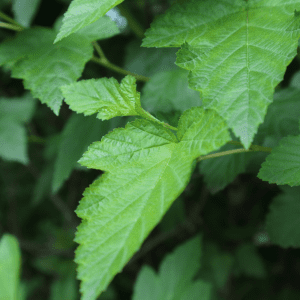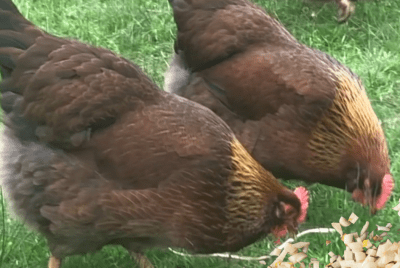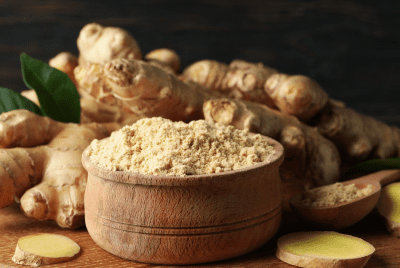Spearmint helps to keep rodents at bay.
.Over the years, households and businesses have struggled with ways to effectively deter rodents from invading their spaces. With the potential health risks and property damage that rodents can bring, finding a solution is crucial. This is where spearmint comes into play. Known for its fresh aroma and culinary uses, spearmint actually serves as a natural rodent repellent thanks to its strong scent that rodents find unpleasant.
Whether it’s in the form of necessary oils, dried leaves, or live plants, incorporating spearmint in your environment can help keep rodents at bay without the need for harmful chemicals or traps. By harnessing the power of this versatile herb, you can create a rodent-free environment that is safe for both humans and pets.

Key Takeaways:
- Effectiveness: Spearmint can help to keep rodents at bay due to its strong scent that acts as a natural repellent.
- Safe Alternative: Using spearmint is a safe and chemical-free way to deter rodents without harmful effects on humans or pets.
- Easy to Use: Spearmint can be planted in gardens, pots, or used in important oils to effectively keep rodents away.
- Long-lasting: Spearmint plants can continue to grow and provide rodent repellent benefits for an extended period of time.
- Environmentally friendly: Using spearmint to deter rodents is an eco-friendly solution that aligns with sustainable pest control practices.
Understanding Spearmint
It is a well-known fact that spearmint is a natural deterrent for rodents, making it a popular choice for those looking to keep their homes free of unwanted pests. But what exactly is spearmint and how does it work to repel these rodents? To truly understand the power of spearmint in rodent control, we must first research into its taxonomy and characteristics.
Taxonomy and Characteristics of Spearmint
Understanding the taxonomy of spearmint is necessary in comprehending its unique properties. Mentha spicata, commonly known as spearmint, belongs to the Lamiaceae family, which includes other aromatic herbs like basil and rosemary. Spearmint is characterized by its serrated leaves, square stem, and delicate purple flowers that bloom in the summer.
Growth and Cultivation
Taxonomy provides a foundation for further exploring the growth and cultivation of spearmint. Spearmint thrives in moist soil and prefers partial shade, making it an ideal plant for home gardens. It is a hardy perennial that can spread rapidly if not contained, so it is necessary to plant it in pots or designated areas to prevent its invasive nature.
Spearmint’s Repellent Properties
The Science of Spearmint as a Deterrent
Assuming you are looking for a natural and effective way to keep rodents away from your home, spearmint might just be the solution you need. Spearmint, scientifically known as Mentha spicata, is a fragrant herb that has been used for centuries for its medicinal and aromatic properties. One of its lesser-known benefits is its ability to act as a natural deterrent for rodents.

Active Compounds in Spearmint
Spearmints contain important oils that are responsible for their strong scent and flavor. These oils, including carvone and limonene, are known for their insecticidal and repellent properties.
When rodents encounter the potent smell of spearmint, they are often deterred from entering the area, making it an excellent natural repellent for keeping pests at bay.
To further enhance the effectiveness of spearmint as a rodent deterrent, you can crush the leaves to release more of the important oils and scatter them in areas where rodents are likely to frequent.
This method not only amplifies the scent but also ensures that the active compounds are more concentrated, increasing the repellent effect.
Another benefit of using spearmint as a natural repellent is that it is safe for use around children and pets. Unlike chemical repellents that may contain harmful toxins, spearmint offers a natural and non-toxic alternative for pest control.
By harnessing the power of spearmint’s active compounds, you can effectively keep rodents at bay while creating a fresh and pleasant environment in your home.
Implementation Methods: Spearmint helps to keep rodents at bay.
Growing Spearmint in Affected Areas
With its natural rodent-repelling properties, spearmint can be a valuable asset in deterring rodents from invading your space. To effectively use spearmint to keep rodents at bay, consider growing it in areas where rodent activity is prevalent. Spearmint is relatively easy to grow and can thrive in various environments, making it a versatile option for pest control.
Preparing Natural Spearmint Repellents
Any effective natural spearmint repellent can be made by crushing fresh spearmint leaves and placing them in strategic locations in your home or garden. The strong scent of spearmint is known to irritate rodents, making them less likely to stick around. Combine this with practices such as proper sanitation and sealing off entry points to create a more comprehensive pest control strategy.
Implementation: Utilizing a combination of growing spearmint in affected areas and preparing natural spearmint repellents can significantly help in keeping rodents at bay. By incorporating these methods into your pest control routine, you can create a more effective and environmentally friendly approach to rodent prevention. Stay proactive and consistent in your efforts to maintain a rodent-free environment.

Benefits of Using Spearmint Over Chemical Repellents
Now, let’s explore the important aspects of why spearmint can be a superior choice compared to chemical repellents.
In the matter of keeping rodents at bay, spearmint offers a natural and effective solution that not only works but also has a variety of benefits over traditional chemical options.
Environmental Impact Comparison
Any comparisons between spearmint and chemical repellents must consider their environmental impact. Let’s break down the differences in the table below:
| Spearmint | Chemical Repellents |
| Biodegradable and eco-friendly | Chemicals can be harmful to the environment |
| Renewable resource | May contain toxic ingredients |
| Safe for wildlife | Can pose a threat to animals and plants |
Health and Safety Considerations
Over recent years, there has been a growing concern over the health and safety implications of using chemical repellents to deter rodents. Spearmint, on the other hand, provides a safer alternative for both humans and pets. Its natural properties make it a non-toxic option that won’t pose risks to health.
To ensure the well-being of your family and pets, opting for spearmint as a rodent repellent can significantly reduce potential health hazards associated with chemical repellents. Spearmint offers a healthier choice that effectively keeps rodents away without compromising on safety.
Limitations and Considerations: Spearmint helps to keep rodents at bay.

Limitations of Spearmint Repellency
To effectively keep rodents at bay, it is important to acknowledge the limitations of using spearmint as a repellent. While spearmint may help deter rodents, it is not a foolproof solution and may not work in all situations. Factors such as the severity of the rodent infestation, the specific species of rodents, and the environment where the spearmint is used can all impact its effectiveness.
It is crucial to use spearmint as part of a comprehensive rodent control strategy, rather than relying on it as the sole method of prevention.
Best Practices for Spearmint Use in Rodent Control
To optimize the use of spearmint in rodent control, there are several best practices to consider. It is recommended to use 100% pure spearmint necessary oil, as artificial or diluted versions may not be as effective. Additionally, regularly refreshing the spearmint scent is important, as its potency can diminish over time.
Placing spearmint sachets in areas where rodents are likely to enter, such as near entry points and nesting sites, can help maximize its repellent effects.
When using spearmint as a rodent repellent, it is important to be consistent and patient in giving the method time to take effect. Rodents may initially be deterred by the scent of spearmint, but it may take some time for them to completely vacate the area. By combining spearmint use with other rodent control methods, such as sealing entry points and removing potential food sources, you can create a more comprehensive approach to keeping rodents at bay.
Complementary Strategies
Integrating Spearmint with Other Repellent Plants
Many natural repellent plants can be integrated with spearmint to create a more effective barrier against rodents. Plants like mint, lavender, and marigold emit odors that are unpleasant to rodents, deterring them from entering your garden or home. By planting a variety of these repellent plants alongside spearmint, you can create a multi-layered defense that will make your space less attractive to pests.

Additional Measures for Rodent Control
Any successful rodent control strategy should involve a combination of methods to ensure maximum effectiveness. In addition to using spearmint and other repellent plants, it is important to take further measures to keep rodents at bay. This may include sealing off entry points, keeping food sources tightly secured, and setting up traps or baits in strategic locations.
To avoid infestations, it is crucial to maintain a clean and clutter-free environment. Rodents are attracted to areas with easy access to food, water, and shelter. So, by eliminating these attractions, you can significantly reduce the likelihood of a rodent problem. Be diligent in your efforts to keep your space rodent-free. And, consider hiring a professional exterminator if the infestation persists despite your best efforts.
Final Words on: Spearmint helps to keep rodents at bay.
Drawing together the evidence, it is clear that spearmint can be an effective natural remedy to keep rodents at bay. Its strong scent is off-putting to these pests, causing them to seek shelter elsewhere. Research suggests that rodents have a dislike for minty smells. This makes spearmint a practical option for deterring them from entering your space. If you are interested in learning more about the topic, you can check out this informative discussion on Do rodents dislike minty smells, such as peppermint and spearmint?
FAQ’s about Spearmint helps to keep rodents at bay.
Q: How does spearmint help to keep rodents at bay?
A: Spearmint contains a strong scent that is unpleasant to rodents. It acts as a natural repellent to deter them from coming near your home or garden.
Q: How should spearmint be used to repel rodents?
A: Spearmint can be planted around the perimeter of your property or in pots near entry points. This creates a barrier that rodents are less likely to cross.
Q: Are there any other benefits to using spearmint for rodent control?
A: In addition to repelling rodents, spearmint also has medicinal properties and can be used in cooking. This makes it a versatile and multi-functional plant to have in your garden.
Q: Is spearmint safe to use around children and pets?
A: Spearmint is safe to use around children and pets. It is a natural and non-toxic way to repel rodents without the use of harmful chemicals.
Q: How can I maintain a healthy spearmint plant for long-term rodent control?
A: To keep your spearmint plant healthy and thriving, make sure it receives plenty of sunlight, water it regularly. Trim it back when needed to prevent overgrowth throw the offcuts in the coop.
Why Do Chickens Stop Laying Eggs?
5 herbs your chickens will love




